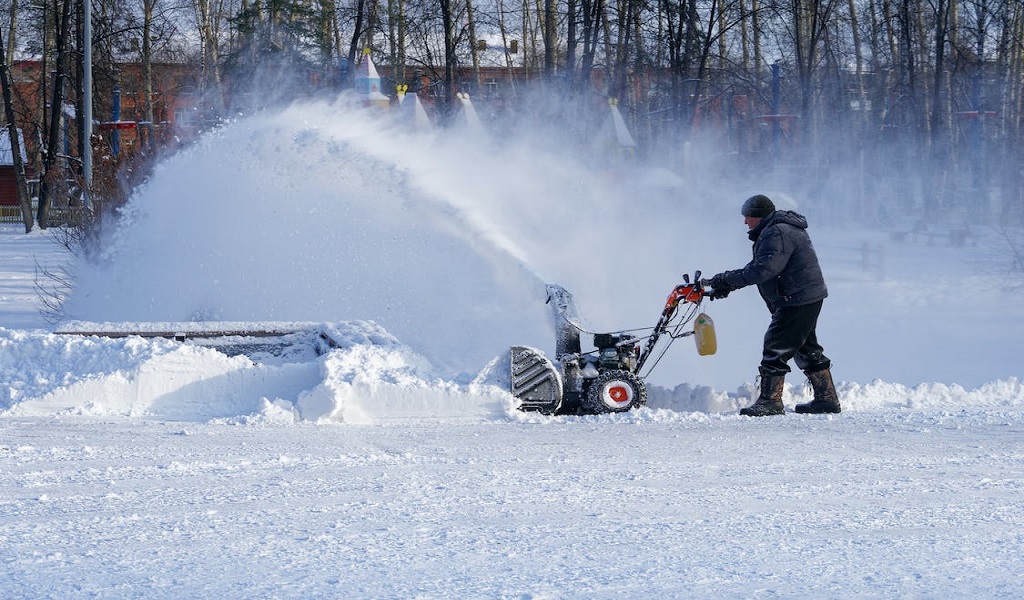Many American states experience harsh winters, with temperatures dipping well below freezing levels and snow falling most of the time. If you run an outdoor business, such as in the construction, transport, and logistics domain, the weather can pose a dire challenge to workers. Besides the winter chill slowing them down, outdoor hazards like slip-and-fall and hypothermia abound.
The winter of 2022 was one of the worst in history, with more than 315,000 homes and businesses plunging into darkness on Christmas Eve. An Arctic blast and winter storm tore down power lines across the country, and plummeting temperatures and heavy snow claimed 22 lives. Outdoor workers were hit the hardest.
According to the Bureau of Labor Statistics, thousands of workers fall prey to winter-related occupational injuries every year. Death is a significant risk for outdoor workers in winter as they are exposed to sub-zero temperatures and slippery surfaces. As an employer, you must do your bit to ensure the safety of your workforce from these hazards.
Here are a few tips to protect your outdoor workers to winter-proof your business.
Know the Potential Hazards
Knowing the potential hazards is the best place to start when it comes to protecting your employees from the elements while they are outdoors. The Occupational Safety and Health Administration statistics suggest that slips, trips, and falls account for 20% of workplace injuries. They even make up 15% of accidental deaths, just after motor vehicle accidents. The risk runs high in winter due to slippery surfaces.
Working from heights in cold weather also leads to fatal risks, as snow-covered roofs easily conceal electrical dangers from power lines and fall-through hazards like skylights. Cold stress is another risk factor for outdoor workers. Cold-related injuries may lead to permanent tissue damage, painful inflammation of blood vessels, skin ulcers, frostbite, and hypothermia.
Provide Protective Gear
Winter weather entails grave danger to people who stay outdoors for long hours. While there may not be an option to work indoors for your employees, you can provide them with protective gear for warmth and safety. Here are some essentials you need to equip them with:
Insulated Clothing
The winter chill can dig deep into the bones when a person isn’t clothed well enough. The impact may be more severe than the external sensation as the body exhausts more energy to stay warm and protect itself from the chill. Proper insulation with protective clothing can be a lifesaver.
Also, make sure that your workers wear enough layers because each layer offers extra protection. Pay attention to garment fabric and design. The inner layers should be moisture-wicking, and the outer layers should be easy to remove if they get wet.
Protective Footwear
The right footwear can make all the difference, from preventing frostbites to minimizing the risk of slips and falls. A pair of thick socks adds another line of defense against the freezing-low temperature outdoors. You can provide workers with functional ice cleats, as they offer better traction and safety on snow and ice.
According to CozyWinters, enhanced traction eliminates the risk of fall-related injuries such as fractured bones, pulled muscles, and back problems. Whatever environments your employees work in, you have peace of mind regarding their safety outdoors.
Headgear
Besides protecting your body and feet from the cold winds, you must also ensure the same from your head. Studies show that a significant amount of body heat is lost from the head. Likewise, ears are prone to frostbite if exposed for prolonged intervals.
Proper headgear can keep your workers warm and safe outdoors, no matter how much the temperatures drop. Insulated caps and hats that cover the ears are ideal. If your workers need to wear hard hats, they should have an appropriate winter liner as an insulated layer.
Prepare and Check-In
Besides providing proper protection with clothing and accessories, you must make sure that your workers are prepared for the weather conditions before stepping outdoors. Encourage warmups with stretching as it can prevent injury from cold muscles. Regular check-in is essential to ensure people are comfortable.
You can adjust the pace or rate of work to support workers. Provide training and instructions for re-warming, dressing appropriately, and recognizing the early signs of injuries like frostbite, cold stress, and hypothermia. Also, have an emergency plan to deal with severe illnesses and save lives when a disaster strikes.
Summing Up
Employee safety should be a priority for employers, regardless of the industry and working conditions. Winter Proofing is vital if your employees work outdoors during the harsh weather because being exposed to the elements compounds the risk. You can follow these worker safety tips to ensure optimal working conditions for your employees, no matter how much it rains and snows.

